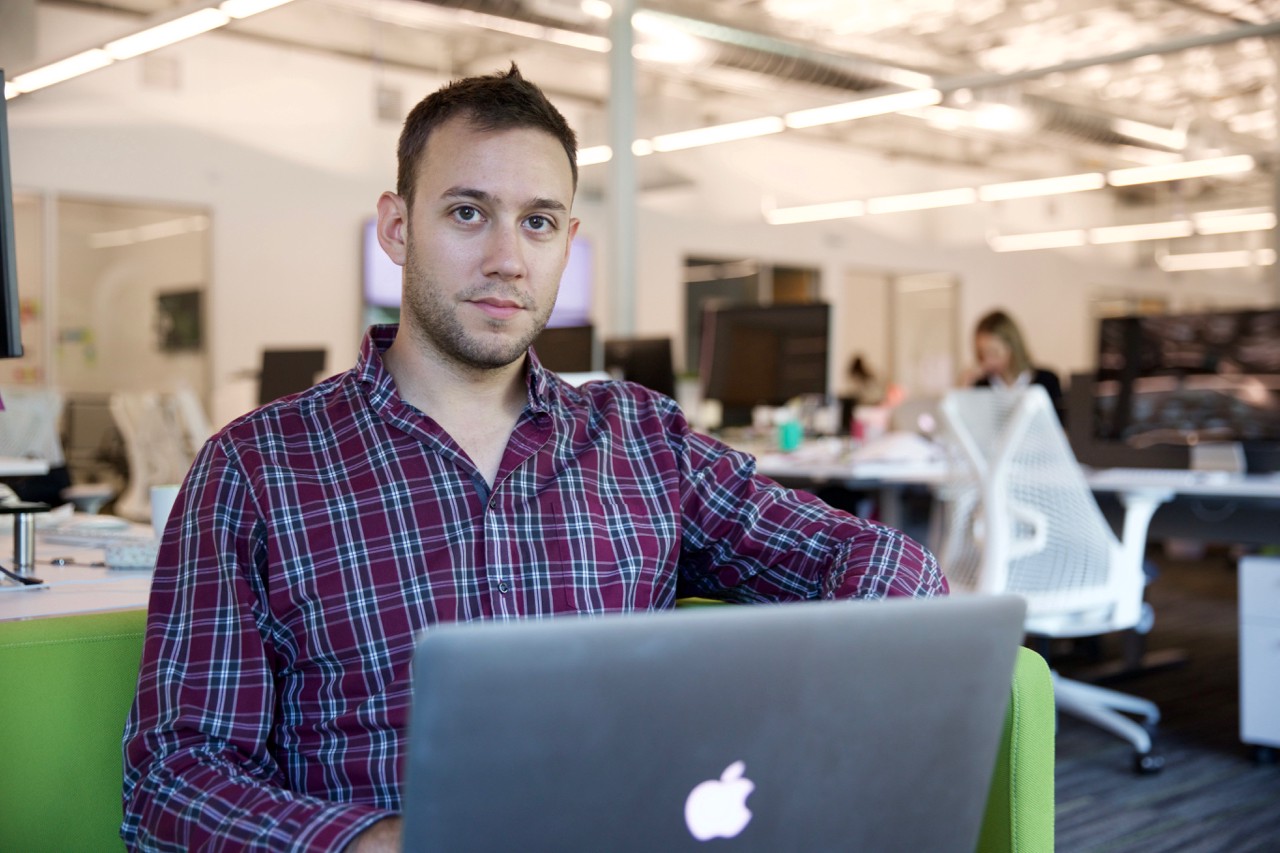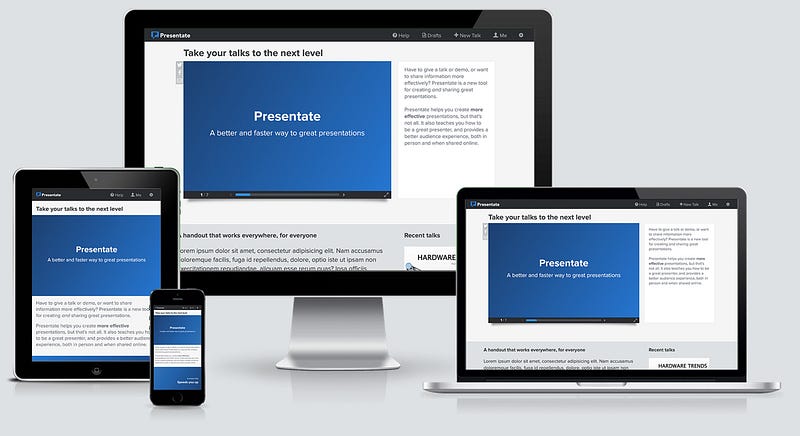The Design Life Of A Product Designer — Interview with Faruk Ates
01 Sep

Faruk Ates is product designer at Quantifind, a data science company to eliminate your competitive blind-spots. In his design career he has worked with startups as well as with big players like Apple, Edyt. He has contributed to many publications with his writings including Smashing Magazine, .net Magazine, Creative Bloq and many more. Also he is a renowned speaker; speaking about web design and web development, around the globe.
Team zipBoard has already interviewed a few product designers to have an understanding of who really is a product designer, but it’s always better to know new people and learn from their experiences. Right?
So, zipBoard recently had a question answer round with Faruk, learning a lot more on product design and a product designer’s thought process. Our conversation with Faruk included topics like Collaboration with developers, his product designer journey, his daily design tools, UI/UX and much more.
What made you a product designer?
Faruk : “ I started my career doing back-end programming and front-end development, with some minor UI and graphics design as well. Across the years — and several jobs — I shifted more and more towards the design side of creating products, shifting my work to earlier stages in the process. After three years at Apple, I’d gotten a much more, well-rounded and articulated understanding of what design, especially product design, really was all about. And I realized that what I had been doing my entire career was the fundamental process of product design: conceptualizing a product, understanding its business and market opportunities, developing a financial plan to sustain it, knowing (or learning) about the materials and components needed to make it, defining its features and workflow, prototyping the interactions, and overseeing its materialization.
I’ve always been passionate about “creating things” — it just took me a while to understand the bigger picture of what that might mean, professionally.”
You created an open source library, modernizr. Tell us about it.
Faruk : “Modernizr is a JavaScript library that detects features in the browser at runtime, so that you, as a web designer and/or developer, can make “on-demand” changes to what technologies you use. It was my goal to get us away from using unreliable User Agent-sniffing techniques by offering people a better solution to determine whether you could safely use a new HTML5 or CSS3 technology, and if not, be able to easily create a fallback. After its release it quickly became one of the top repositories on Github, and we have more than 200 contributors who have made it the success it is today.
When I first made it (ca. January 2009), UA sniffing was still a widely-used practice despite our long-running advocacy efforts against it. But thanks to tireless efforts of the volunteer team and our contributors, Modernizr has, as the second-most popular independent JavaScript library in use on more than 6.5 million websites, normalizing the practice of feature detection in web development.”

You are a speaker at many conferences, you are a writer, you have worked in different companies playing different roles. We would love to hear about your journey.
Faruk: “I also lived in different countries and continents, so it’s definitely been quite a trip! I actually started my professional career as a video game journalist in the late 1990’s, in The Netherlands where I grew up, at the very first Dutch online games magazine. It seemed a dream come true: play video games, then write reviews about them! But it wasn’t a lucrative enough field for almost anyone to have it as a full-time job, so I honed my web development skills and set out to create websites professionally. Along the way, I also did side activities like being a radio show co-host and technician, Model United Nations, running my own communities, and writing fiction stories.
My experimentation with web technologies, combined with my interest in and advocacy for web standards and accessibility, led me to be invited as a panelist at the first Web Accessibility panel at SXSW, in 2006. From there on I got onto the speaker circuit every so often and was fortunate enough to be invited to speak all around the world.
Right now I’m learning how to draw and do concept art so that I can add my own drawings to go with my fiction writing. I’m also learning Spanish; I live in the Mission in San Francisco, so I feel it’s important and respectful to be at least somewhat fluent in the local language and community.”
How is your product design experience at Quantifind?
Faruk: “It’s fascinating and challenging! We’re a quantum physics-originated company that combines big data science with human curiosity and human pattern-matching. The products I work on are our web applications that facilitate, in essence, very complex analytics tasks. It’s another new area for me to work in, so I’ve been enjoying that a lot.”

How do you collaborate with developers?
Faruk: “It’s a really great collaboration for me because I’m a former back– and front-end developer myself, so we speak the same “language” when we discuss concerns like performance, features, ideas, technology stacks, and so forth.
I’ve always advocated for designers to understand at least enough about the technology stack they’re designing; for that, they can have clear and useful discussions with developers about all the aspects of the product. Every day in my own job, I’m reminded of the tremendous added value it brings.”
What gave you the idea to create Presentation and how helpful it is in daily life?
Faruk: “I was frustrated with the incredibly outdated product design thinking that dominated the presentation software (“slideware”) industry, even at Apple. And very few startups were interested in rethinking the fundamentals of what presentations are, and should, and could be in today’s social, online, connected environment. The ones that actually did take a different approach still missed the boat on some fundamental product design concerns. So I wanted to create something of my own that, at the very least, demonstrated what I believed a lot of presentations could be like — not all, necessarily, but many. I found myself a co-founder whose skills complemented my own perfectly — stronger in development but with a design sensibility — and whose interest in the presentation space matched mine, and we got to work.
The resulting product, Presentation, never launched to the public for a combination of reasons, mostly personal, but the private beta users’ response was so enthusiastic, about our vision for presentations that some of them still use it, even with its very limited beta feature set. I still do all my own presentations with it.”

How do you do rapid prototyping with your team?
Faruk: “We’re just in the process of putting our design system together in Sketch, and have started to use Principle for Mac for our prototyping. We previously used, and at times still do, Framer JS for this purpose, or sometimes just simple HTML, CSS, and some JavaScript, but we’re slowly converting our efforts around Sketch + Principle.
That said, I’ve been beta testing Adobe Experience Design (XD) since its first alpha release and the performance and pace of development for it is fantastic. It doesn’t yet have the breadth of features, especially for prototyping micro-interactions and micro-transitions (like a drop-down menu or a popover), but if it adds those and gets them right, it could completely change things around. Not just for us; for the industry.
Even then, however, I can’t help but wonder when someone will finally build a prototyping and design tool that takes the creation, establishment, and ongoing use of a living design system as its fundamental baseline. I’ve been envisioning such a product for years now, especially after the release of React and, even more so, React Native; I’m hoping there’s a startup somewhere secretly working on this product.”
What are your favorite tools that complete your day?
Faruk: “ I’ll start my shout-outs with Adobe XD, simply because I love using it. They are getting all of the interactions and keyboard shortcuts right, which is my main frustration with Sketch & similar.
Fantastical is my calendar app of choice, I use Letterspace for note-taking, Ulysses for writing long-form, 1Password for security, and continuously gripe about Mailbox’s demise because I don’t really like any of the other mail apps out there, still. Handy little tools like ColorSnapper, xScope, and Alfred, all complete my day.”
Can you share the idea behind some of your best publications?
Faruk: “ It’s always come down to pushing the industry forward, challenging conventions and traditions, and showcasing what a “new world” could be like. Even on my old, now-defunct blog, my most popular posts were always the ones that showed a better or different way of doing a development technique or a design pattern.
Whatever I do, I always strive to push the envelope as best I can. I once confounded a co-worker at Apple, who created the CSS transitions and animations engine and wrote its specification, by making Safari do something he didn’t believe could be done. (I also crashed the browser more often than not with my experiments, which was less fun, but more useful for them at least.) When it comes to writing articles for publications, I try to capture that kind of thinking and turn it into a design or development “philosophy”.”
“The next stage of evolution for our industry is to explore how to make our applications and products more inclusive, taking into account the vast spectrum of differences in our audience, and to make our interfaces smarter so that they serve a wider range of people more effectively.”– Faruk Ates on Inclusive Design.

As a designer what social channels do you love to hang around?
Faruk: “ I try to attend conferences and events — this year’s Clarity Conference was one of my favorites in a long while. I try to check online resources like Designer News and Hacker News when I can, but I also encounter a lot of interesting links to articles and projects just via Twitter and Facebook. These days, many interests and topics just blend together for me, which leads to new perspectives and a greater understanding of things.
For instance, my interests in feminism, race & gender equality, economic stability, and the shifts in the cultural and socio-political landscapes have converged with my product design sensibilities. This has led me to see social problems in a much more familiar, “solvable” light, and I see products as having a psychological component that affects our environment at a macro and a micro level, affecting our personal being as well as society in ways that most people don’t yet consider.
Everything is a lot more interconnected than one might think, which can be overwhelming and even terrifying, to consider the implications of that, but it also provides a framework for us to tackle problems head on, in ways we’re already experienced in.
That kind of thinking excites me, and perhaps it represents the next little nudge I could give our industry. We’ll see.”
More from Faruk
To know more about Faruk you can visit his here. You can also follow him on Twitter, Flickr, Instagram. To catch up with his writings you can visit his blog.
zipBoard is still on with the interviews of great product designers. In case you missed the previous ones you can visit our blog and enjoy reading the experiences of these amazing product designers.
Request Demo
Request a personalized demo of zipBoard to annotate, collaborate, assign tasks, and provides responsive testing when designing your website or e-learning course. It also allows you to gather feedback from various stakeholders and track progress.
Get DemoRelated Post
Recent Posts
- MEP Document Management: How to Streamline Reviews & Avoid Rework October 3, 2025
- What Is Online Proofing Software? And Why Content Review Breaks Without It July 11, 2025
- How Laerdal Medical Cut eLearning Review Time by 50% with zipBoard’s Visual Review Tool July 9, 2025
- Why Your Team Needs a Content Feedback System (Not Just Comments in Docs) May 28, 2025
- Content Approvals Are Slowing You Down — Here’s the Fix May 26, 2025
©️ Copyright 2023 zipBoard Tech. All rights reserved.


